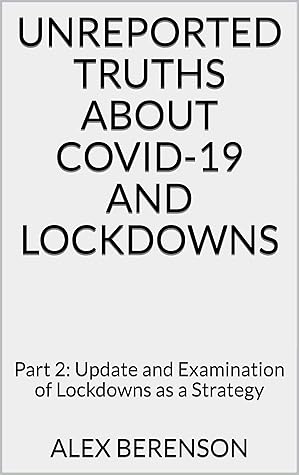More on this book
Community
Kindle Notes & Highlights
Read between
August 4 - August 6, 2020
In 1969, six researchers at the base developed moderate to severe cold symptoms. What made the incident so fascinating was that they got sick in the middle of the Antarctic winter, after they had been isolated from all human contact for 17 weeks straight. (https://www.ncbi.nlm.nih.gov/pmc/articles/PMC2130424/?page=10)
Based on the CDC’s scale, Sars-Cov-2 almost certainly should be classified as Category 2 epidemic, meaning it will cause between 90,000 and 450,000 deaths. For Category 2 or 3 epidemics, the CDC merely said governments should consider school closures of less than four weeks, along with moderate efforts to reduce contacts among adults, such as encouraging telecommuting.
As early as March 21, a group of physicians in northern Italy warned in a New England Journal of Medicine article: We are learning that hospitals might be the main Covid-19 carriers, as they are rapidly populated by infected patients, facilitating transmission to uninfected patients. Patients are transported by our regional system, which also contributes to spreading the disease as its ambulances and personnel rapidly become vectors… [Sars-Cov-2] is not particularly lethal, but it is very contagious. The more medicalized and centralized the society, the more widespread the virus.
...more
in examining a week of cases from June 28 through July 4, the Health Ministry of Quebec reported fewer than 15 percent could be traced to workplaces, stores, or bars and restaurants. 35 percent were intra-familial. Another 25 percent were of health care workers, patients, or prison inmates, and a similar number could not be traced. Particularly striking about the Quebec figures is that they occurred after the province’s lockdown had ended. (https://www.cbc.ca/news/canada/montreal/covid-19-quebec-why-are-cases-increasing-1.5658082)
Fewer than 0.5 percent of Americans live in nursing homes – fewer than 1 in 200 people. But in both the United States and Europe, nursing home residents have accounted for 40 to 50 percent of all Covid deaths, well over 100,000 in all. (https://www.theguardian.com/world/2020/may/16/across-the-world-figures-reveal-horrific-covid-19-toll-of-care-home-deaths)
Experience has shown that communities faced with epidemics or other adverse events respond best and with the least anxiety when the normal social functioning of the community is least disrupted.


